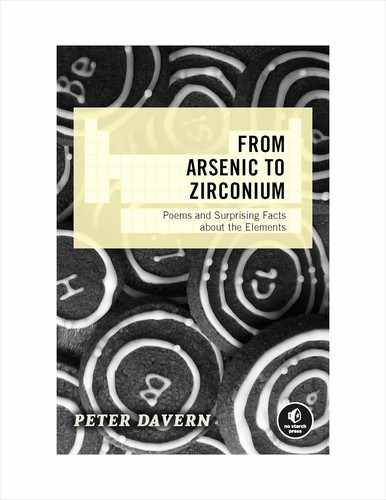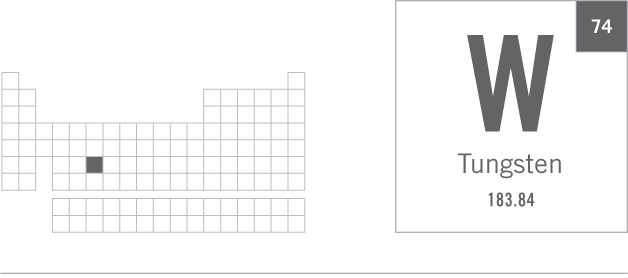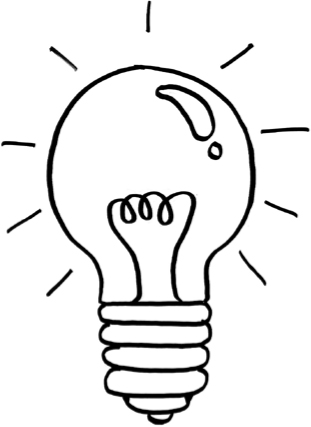TUNGSTEN (OR WOLFRAM), W
BULBS OF LIGHT
Oh tungsten’s hewn from heavy stone, while wolfram wolfs down tin,
GROUP 6 TRANSITION METAL
[hewn: past participle of the verb to hew — to cut with blows of a heavy cutting tool]
[to wolf down: verb (informal) — to eat rapidly without consideration for manners or etiquette]
The International Union of Pure and Applied Chemistry (IUPAC) is the world authority on chemical nomenclature and terminology, including the naming of elements. But IUPAC’s naming of element 74 hasn’t been without controversy. Although the name wolfram was given initial priority, tungsten was recognized as an alternate name. Both names derive from minerals containing the element, namely wolframite and tung sten, respectively. Wolframite was named by frustrated German tin miners due to its ability to interfere with the smelting of tin; wolfram means wolf’s foam in German. The name refers to the tendency of this troublesome mineral to devour their tin, much like a wolf devours sheep. The name of the mineral tung sten, on the other hand, comes directly (and perhaps more prosaically!) from the Swedish phrase for heavy stone.
Although the element is known as wolfram (or volfram) in many countries, the name tungsten prevails in English-speaking countries. In keeping with its goal of reducing ambiguity in chemical nomenclature and its agreed mandate to provide all nomenclature recommendations in English, IUPAC chose tungsten as the sole name for element 74 in 2005. But at that time, it readily conceded that “the Spanish, the Danes, and many other nationalities may happily continue to use wolfram in their locally adapted IUPAC nomenclatures.”
When metals brag ’bout melting points, hands down ’twill always win!
Tungsten is a lustrous, silvery-white transition metal that sits at the intersection of group 6 and row 6 on the periodic table. It has the highest melting point (3,407°C) of any metallic element, a good 227°C higher than its nearest rival (and periodic table next-door neighbor), rhenium.
It glows (too hot!) in bulbs of light,
Tungsten’s ability to remain strong at very high temperatures (combined with its high melting point and low vapor pressure) made it the material of choice for incandescent lightbulb filaments. Incandescent lightbulbs illuminated many homes for much of the 20th century. But they only convert about 10 percent of the electricity consumed into visible light (the remainder is wasted as heat and infrared radiation). Although still used today, their incredible inefficiency has led many countries to phase them out in favor of more energy-efficient alternatives, such as light-emitting diodes (LEDs) and compact fluorescent lightbulbs (CFLs).
Help’d Rosberg glide through bends so tight,
Tungsten is a particularly heavy metal (it’s almost 70 percent denser than lead). It’s also significantly cheaper than other very dense metals, such as gold, osmium, and iridium. Small tungsten alloy plates, strategically placed on the undercarriages of Formula One racing cars, provide the necessary ballast for optimum vehicle handling. As a result, drivers like Nico Rosberg have been able to glide effortlessly through the tightest of bends.
Its carbide ball sits primed with ink, each new word to begin.
Tungsten carbide (chemical formula: WC) is a wonderfully hard material that makes excellent cutting and drilling tools. It’s also ubiquitous as the hard, tiny ball that enables the smooth and steady flow of ink onto paper as it rolls effortlessly within the tip of a ballpoint pen.


